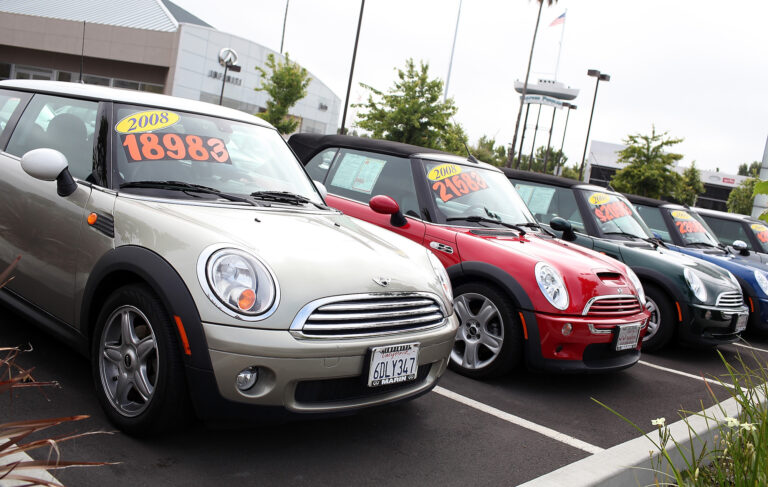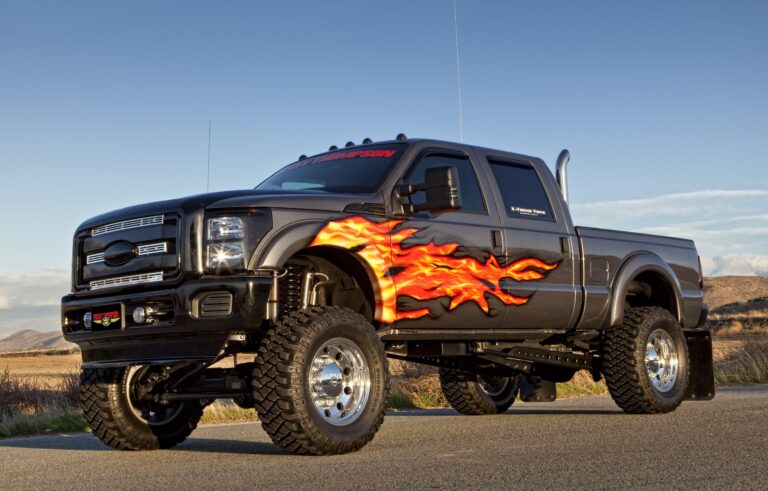78 Ford Trucks For Sale: Your Ultimate Guide to Finding and Owning a Classic Workhorse
78 Ford Trucks For Sale: Your Ultimate Guide to Finding and Owning a Classic Workhorse cars.truckstrend.com
The year 1978 holds a special place in the hearts of Ford truck enthusiasts. Representing the penultimate year of the iconic "Dentside" generation (1973-1979), the 1978 Ford F-Series pickup truck is a quintessential symbol of American automotive ruggedness and timeless design. More than just a utility vehicle, these trucks evoke a powerful sense of nostalgia, reminding many of a simpler era of no-nonsense engineering and enduring reliability. For those seeking a classic workhorse, a formidable restoration project, or a unique daily driver, a 1978 Ford truck for sale offers an unparalleled blend of character, capability, and investment potential.
This comprehensive guide will delve into everything you need to know about navigating the market for 1978 Ford trucks, from understanding their appeal and various models to practical advice on inspection, ownership, and what to expect financially.
78 Ford Trucks For Sale: Your Ultimate Guide to Finding and Owning a Classic Workhorse
Why a 1978 Ford Truck? The Enduring Appeal
The 1978 Ford F-Series stands out for several compelling reasons. It perfected the Dentside design, offering a bold, squared-off aesthetic that perfectly encapsulated the era. These trucks were built on incredibly robust frames, designed to withstand years of hard work, a testament to Ford’s "Built Ford Tough" philosophy long before the slogan became commonplace.
The engine options were diverse and powerful for their time, including the venerable 300 cubic inch inline-six, known for its bulletproof reliability and torque, as well as a range of V8s: the 302, 351M, 400, and the mighty 460 cubic inch V8. This variety ensured there was a powertrain for every need, from light hauling to heavy-duty towing.
Beyond their mechanical prowess, 1978 Ford trucks carry significant cultural weight. They are symbols of American industry, resilience, and the open road. Their relatively simple mechanical nature makes them accessible for DIY enthusiasts, while their increasing scarcity in good condition makes them attractive to collectors. Whether you plan to restore one to concours quality, customize it into a modern restomod, or simply enjoy it as a reliable classic driver, the 1978 Ford truck offers a deeply satisfying ownership experience.
Understanding the 1978 Ford F-Series Lineup
Before you begin your search, it’s crucial to understand the different models and configurations available in 1978:

- F-100: The base model, often two-wheel drive, lighter duty, and popular for everyday use.
- F-150: By 1978, the F-150 had largely replaced the F-100 in popularity, offering a higher Gross Vehicle Weight Rating (GVWR) that exempted it from certain emissions regulations, making it a favorite for both 2WD and 4×4 configurations. It’s often considered the sweet spot for many buyers.
- F-250: A heavy-duty model, designed for more serious hauling and towing, often featuring larger axles and heavier springs. Available in 2WD and 4×4, including the popular "Highboy" (pre-1977.5) and "Lowboy" (post-1977.5) variants which refer to their ride height relative to the frame.
- F-350: The ultimate workhorse, often configured as a single-cab chassis for commercial applications, dump trucks, or campers.

Body Styles:
- Regular Cab: The most common configuration, seating two to three.
- SuperCab: Introduced in 1974, offering extended cab space behind the front seats, often with jump seats for extra passengers or storage.
- Crew Cab: Rare and highly sought-after, offering four full doors and seating for six, primarily found in F-250 and F-350 models.

Trim Levels:
- Custom: The base, no-frills model.
- Ranger: Added exterior trim, better interior materials, and more comfort features.
- Lariat: The top-tier luxury trim, featuring plush interiors, chrome accents, and a wide array of options.
- Explorer: A special appearance package available on various trims, often with unique graphics and interior appointments.
- "Free Wheeling" Package: A distinctive, vibrant package with multi-color stripes, black grilles, and sometimes unique interior fabrics, popular with a younger demographic.
Knowing these distinctions will help you narrow down your search and identify the specific truck that best fits your needs and budget.
Where to Find 1978 Ford Trucks For Sale
The market for classic trucks has never been hotter, and 1978 Ford trucks are no exception. Here are the best places to begin your search:
- Online Marketplaces:
- eBay Motors: A vast selection, from parts trucks to fully restored examples. Be diligent with seller ratings and ask for detailed photos/videos.
- Craigslist/Facebook Marketplace: Excellent for local finds, often at more accessible prices. Be prepared for less detailed listings and always inspect in person.
- Classic Car & Truck Websites: Sites like ClassicCars.com, Hemmings.com, and Bring a Trailer (for higher-end, well-documented examples) specialize in vintage vehicles.
- Specialized Forums & Clubs: Online forums dedicated to Dentside Ford trucks (e.g., Ford-Trucks.com forums) often have classified sections where passionate owners buy and sell.
- Auctions: Live auctions (like Mecum, Barrett-Jackson) or online auction platforms can yield great finds, but be aware of buyer’s premiums and inspect vehicles thoroughly beforehand.
- Local Classifieds & Word-of-Mouth: Don’t underestimate the power of traditional methods. Check local newspapers, drive around rural areas, and talk to mechanics or classic car enthusiasts in your area.
- Specialty Dealerships: Some dealerships focus exclusively on classic and vintage trucks. While prices may be higher, these vehicles are often pre-inspected, and the dealer may offer warranties or financing.
When searching online, use specific keywords like "1978 Ford F-150," "78 Ford F250 4×4," or "Dentside Ford truck" to refine your results.
What to Look For: A Buyer’s Inspection Guide
Buying a vintage truck requires a keen eye and a thorough inspection. Rust is the primary enemy of these vehicles, but other mechanical issues can also lurk beneath the surface.
-
Rust:
- Cab: Inspect cab corners, floor pans (especially under the mat), rocker panels, firewall, and around the windshield and rear window.
- Bed: Look at the bed floor, bed sides, and especially the wheel wells.
- Fenders & Doors: Check for bubbling paint, particularly around the wheel arches and lower door seams.
- Frame: Critically inspect the entire frame for excessive surface rust, rot, cracks, or previous repairs. Pay attention to body mounts and suspension mounting points.
- Undercarriage: Examine brake lines, fuel lines, exhaust system, and suspension components for severe rust.
-
Engine & Drivetrain:
- Cold Start: Ideally, hear the engine start cold to identify any smoking (blue for oil, white for coolant, black for fuel), knocking, or odd noises.
- Fluid Leaks: Check for oil, coolant, power steering, and transmission fluid leaks.
- Transmission: Test all gears, including reverse. For automatics, check for smooth shifts. For manuals, check clutch engagement and gear grinding.
- 4×4 (if applicable): Engage 4-wheel drive (high and low range) and listen for unusual noises from the transfer case or axles.
- Driveshafts & U-Joints: Check for play.
-
Suspension & Steering:
- Look for worn ball joints, tie rod ends, kingpins (on some 4x4s), and shock absorbers.
- Check for excessive play in the steering wheel.
- Look for broken or sagging leaf springs.
-
Brakes:
- Check brake fluid levels and condition.
- Test brake pedal feel (should be firm, not spongy).
- Listen for squealing or grinding during braking.
-
Interior & Electrical:
- Seats: Check for tears, springs, and overall condition.
- Dash: Look for cracks (common due to sun exposure).
- Gauges & Lights: Ensure all gauges work and all interior/exterior lights function.
- HVAC: Test the heater and fan. Air conditioning is rare but check if present.
- Glass & Seals: Check for cracks in windows and the condition of door/window seals (can lead to water leaks).
-
Documentation:
- Ask for the vehicle’s title (ensure it matches the VIN).
- Any maintenance records are a huge bonus and can indicate how well the truck was cared for.
Always consider a pre-purchase inspection by a trusted mechanic specializing in older vehicles. This small investment can save you from costly surprises down the road.
Restoration vs. Driver: Setting Your Expectations
When buying a 1978 Ford truck, you’ll encounter vehicles across a wide spectrum of conditions, from rusty farm trucks to pristine show queens.
- Project Truck: These are typically the cheapest to acquire but will require significant time, money, and skill to bring back to life. Ideal for someone who enjoys hands-on work and has a substantial budget for parts and professional services.
- Driver Quality: A truck that runs, drives, and stops reliably, but has cosmetic flaws, minor mechanical issues, or needs general TLC. This is often the sweet spot for those wanting to enjoy a classic without a full restoration immediately.
- Good Condition: Well-maintained, mostly original or tastefully restored, with minimal rust and all systems functioning. These command higher prices but offer a more immediate enjoyment.
- Excellent/Show Quality: Fully restored or exceptionally well-preserved original trucks. These are the most expensive but are ready for shows or daily enjoyment without major work.
Your budget, mechanical aptitude, and intended use for the truck will dictate which category is right for you. Remember that a "cheap" truck can quickly become very expensive once restoration costs are factored in.
Common Upgrades and Modifications
Many 1978 Ford truck owners choose to modify or upgrade their vehicles to enhance performance, reliability, or comfort.
- Engine Swaps: Popular options include modern Ford Coyote V8s for power and efficiency, or Cummins diesel conversions for serious torque and fuel economy.
- Suspension: Lifts for off-roading, lowering kits for a street-truck look, or modern coil-over conversions for improved ride quality.
- Brakes: Disc brake conversions (especially for the rear) greatly improve stopping power over original drum brakes.
- Comfort: Adding modern air conditioning, power steering (if not equipped), power windows, or an upgraded infotainment system.
- Electrical: Upgrading to a modern wiring harness can prevent electrical gremlins and allow for more accessories.
- Fuel Injection: Converting carbureted engines to electronic fuel injection (EFI) improves cold starts, fuel economy, and overall drivability.
- Overdrive Transmissions: Swapping in a modern automatic or manual transmission with an overdrive gear significantly improves highway cruising fuel economy and comfort.
Financing and Insuring Your Classic 1978 Ford Truck
Acquiring a classic truck often requires specialized financing and insurance.
- Financing: Traditional banks may be hesitant to finance older vehicles. Look for specialized classic car lenders who understand the nuances of vintage vehicle values. Interest rates may vary, and a significant down payment is often required.
- Insurance: Standard auto insurance policies may not adequately cover the agreed-upon value of a classic truck. Seek out classic car insurance providers (e.g., Hagerty, Grundy, American Collectors Insurance) who offer "agreed value" policies. This ensures that if the truck is totaled, you receive the insured amount, not just depreciated market value. They often have specific requirements regarding vehicle use (e.g., limited mileage, garaged storage).
Representative Price Guide for 1978 Ford Trucks For Sale
Prices for 1978 Ford trucks vary dramatically based on condition, model (F-100 vs. F-350), engine, options (4×4, AC, power steering), location, and originality. This table provides a general range; specific vehicles may fall outside these estimates.
| Condition Category | Estimated Price Range (USD) | Typical Characteristics |
|---|---|---|
| Project Truck | $1,500 – $6,000 | Significant rust, non-running or poorly running engine, major mechanical issues, incomplete interior, needs full restoration. |
| Driver Quality | $6,000 – $15,000 | Runs and drives reliably, minimal critical rust (some surface), cosmetic flaws (dents, faded paint), needs general maintenance. |
| Good Condition | $15,000 – $30,000 | Solid body with minor rust, good paint, reliable mechanically, mostly original or tasteful minor upgrades, clean interior. |
| Excellent/Show Quality | $30,000 – $60,000+ | Near-flawless restoration or exceptionally preserved original, all systems functional, show-ready appearance, rare configurations. |
Note: Prices can be significantly higher for rare configurations like Crew Cabs, factory 4x4s with desirable engines, or trucks with the "Free Wheeling" package in excellent original condition.
Frequently Asked Questions (FAQ) about 1978 Ford Trucks
Q1: Are 1978 Ford trucks reliable?
A1: Yes, the 1978 Ford F-Series trucks are generally considered very reliable. Their simple, robust mechanical design makes them easy to maintain and durable. Many original engines and transmissions are still running strong today.
Q2: What’s the best engine for a 1978 Ford truck?
A2: It depends on your needs. The 300 I6 is legendary for its bulletproof reliability and torque, perfect for a work truck or daily driver. The 351M and 400 V8s offer a good balance of power and a classic V8 sound. The 460 V8 is the most powerful, ideal for heavy towing, but less fuel-efficient.
Q3: Are parts hard to find for 1978 Ford trucks?
A3: Generally, no. Many parts are still readily available from aftermarket suppliers, online retailers, and even some Ford dealerships for common wear items. Body panels and trim can be more challenging for specific models or rust-free examples, but reproduction parts are becoming more common.
Q4: How much does it cost to restore a 1978 Ford truck?
A4: A full, professional, body-off restoration can easily cost anywhere from $30,000 to $70,000 or more, depending on the initial condition and desired level of perfection. A DIY restoration can be cheaper, but still requires significant investment in parts, tools, and time.
Q5: What’s the difference between F-100, F-150, F-250, and F-350?
A5: These designations indicate the truck’s Gross Vehicle Weight Rating (GVWR) and payload capacity. F-100s are lighter duty, F-150s are light-duty but more robust, F-250s are heavy-duty, and F-350s are one-ton trucks, designed for the heaviest loads. They differ in suspension, axle strength, and frame components.
Q6: Can a 1978 Ford truck be a daily driver?
A6: Absolutely! Many 1978 Ford trucks serve as reliable daily drivers. However, be prepared for less modern comfort features (e.g., no power windows, cruise control, or advanced safety systems) and potentially lower fuel economy. Regular maintenance is key to their longevity. Many owners upgrade brakes, add power steering, and convert to EFI for enhanced daily drivability.
Conclusion
Embarking on the journey to find a 1978 Ford truck for sale is an exciting prospect. These iconic machines represent a bygone era of American automotive manufacturing, offering a unique blend of rugged utility, classic style, and a deeply satisfying ownership experience. Whether you’re a seasoned collector, a first-time classic truck owner, or simply someone yearning for a taste of automotive history, the 1978 Ford F-Series holds immense appeal.
By understanding the different models, knowing where to look, conducting a thorough inspection, and setting realistic expectations for condition and cost, you can confidently navigate the market. Owning a ’78 Ford truck is more than just having a vehicle; it’s about preserving a piece of American heritage and becoming part of a passionate community that celebrates these enduring workhorses. Your perfect classic Ford truck is out there, waiting to be driven and cherished for years to come.





